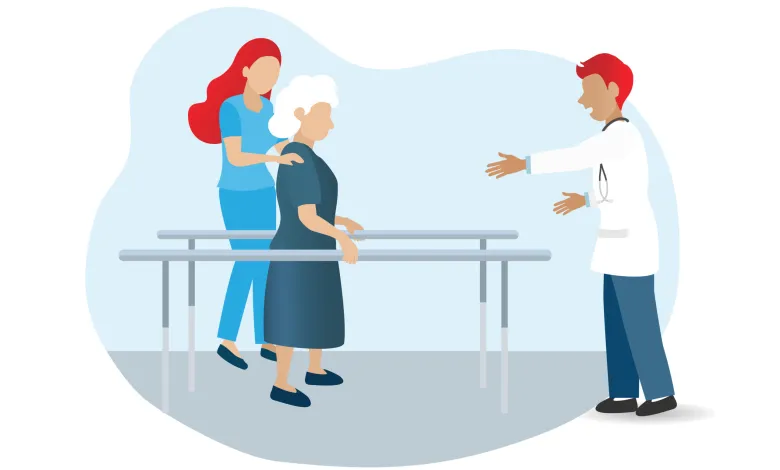Know In Detail What Is Neurorehabilitation And How It Work

Neurorehabilitation, or neuro rehab as it’s sometimes called, is an important part of the treatment process for people who suffer from neurological disorders and injuries that affect motor skills and movement. These conditions can include brain injury and stroke, but also chronic diseases such as multiple sclerosis and Parkinson’s disease and even cognitive disorders such as Alzheimer’s disease or traumatic brain injury (TBI).
Medical rehabilitation helps to retrain neural pathways that are damaged due to injury or disease, helping sufferers to regain movement and control over their motor abilities to improve the quality of their lives.
1) Reducing symptoms
Neurorehabilitation involves a team, which includes a doctor and a physical therapist. This team helps people who have been diagnosed with neurological conditions such as strokes and multiple sclerosis. The goal of neurorehabilitation is to reduce symptoms and improve the quality of life for those who are living with neurological issues.
The exact process that occurs during neurorehabilitation depends on which area of treatment is being focused on. In some cases, physical therapy can help improve mobility issues or walking speed. For others, a speech pathologist may work with patients to strengthen communication skills. A therapist may also be able to help reduce symptoms in people who are suffering from pain or depression as a result of their condition.
2) Addressing the underlying cause
Neuro-rehabilitation addresses the underlying cause of the individual’s disability, which may be caused by several neurological conditions. The goal is not to treat symptoms but rather to treat the condition itself, thereby improving quality of life.
There are many benefits from neuro-rehabilitation: it can reduce pain and improve mobility; increase independence and self-care abilities, and restore an individual’s ability for greater participate in daily activities.
3) Improving the function
Many people have a misconception that people with neurological impairments are limited in what they can do. Neurorehabilitation is the process of retraining the brain and nervous system to help improve the quality of life for those living with neurological deficits.
These neurological rehabilitation programs work by helping patients improve their functional abilities, learn how to live independently, and how to maintain as much independence as possible. There are many different types of neurorehabilitation programs, such as physical therapy, occupational therapy, speech therapy, and more.
4) Promoting independence
Neurorehabilitation works by using a variety of techniques to teach a person how to do things they may not be able to do on their own.
It is designed to help patients learn skills they need for everyday life and work that will also improve their quality of life. The goal is not just functional independence, but it also helps people recover their abilities and enjoy the things that are important in life.
5) Enhancing quality of life
The brain is the most complex organ in our body. It controls every function in the body and is responsible for everything we do, feel, say or think.
The brain can be injured or diseased and this can lead to a variety of symptoms such as difficulty with movement, loss of speech or memory, vision problems, and more. Neurorehabilitation helps patients recover from injury by teaching them new ways to move or think that their brains have not been able to learn before.
6) Returning to meaningful activities
Nutrition rehabilitation from a brain injury is all about getting back to what you love. The occupational therapist will work with you on the functional skills necessary for your desired level of independence, but it is always important to try and return as quickly as possible to meaningful activities that are meaningful to you.
7) Supporting caregivers
What are the ways neuro rehabilitation works? Neuro rehab is a treatment program that helps those with brain injuries, such as strokes and traumatic brain injuries. It can also help those who have chronic conditions, such as Alzheimer’s disease and Parkinson’s disease.
A neuro-rehabilitator will work with the patient to design a treatment plan designed specifically for them. It will take into account their current abilities as well as their goals for improvement.
Conclusion
No matter what your neurological condition might be, it’s likely that you want to know more about the treatment options available to you. Neurorehabilitation therapy allows patients with neurological conditions to overcome their symptoms and manage their symptoms better on a day-to-day basis.



